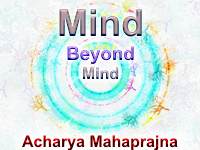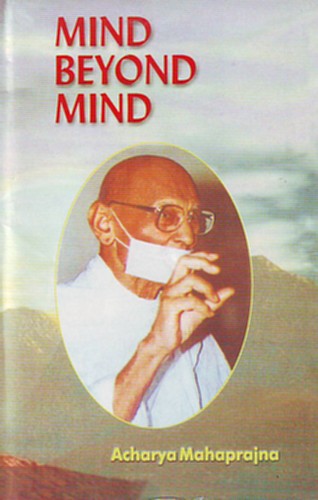
Spells like Aum, Arham, Namo Arihantanam etc. are powerful esoteric formulas, a recital of which procures various kinds of gains for us. By themselves they are like a boat, which alone is incapable to take you to the opposite shore of the river. Besides the boat, you need a boatman, his technical skill and oars to carry you across the river. Mere mechanical recitation of the Mantra will be totally ineffective. Without an expert boatman the boat, while crossing the river, is likely to capsize. Most of us simply recite Mantras mechanically without fulfilling the concomitant condition, which are necessary for the affectivity of the Mantra with the result that our recitation proves abortive. In such a condition we are likely to lose faith in the power of the Mantra.
The first condition is that the practitioner's mind should be joined to the sacred formula. The practitioner has to identify himself with the Mantra He has to be Mantra-minded so to say. The mind of man plays a very important role in almost all the activities of life. Even if you eat food without having a mind in it, it will not produce the desired effect. Ordinarily the mind wanders while you are taking a meal. We often eat food having half a mind in it. This applies to most of the activities of life. The sacred formulas have got to be recited, like the telling of beads, with a single-minded devotion.
To do things with half a mind in them will not enable the practitioner to achieve any kind of success in Sadhana. The whole mind has to be applied to the object of meditation. The recitation of Mantras should not be taken to be a merely mechanical process. It is essentially a spiritual effort and exertion. A distracted mind is an obstacle in Sadhana. The practitioner should not leave any part of his mind unengaged. The mind should be wholly concentrated on the objective. This needs a vigorous training of the mind. It should be trained in such a way that it may be commanded to concentrate on any object you like. There should be the least possibility of its being distracted. A wavering mind is the most ineffectual instrument. It is the divided mind, which wavers and creates all kinds of problems. Every one of us has several minds, so to say. What is needed in Sadhana is to develop a single undivided mind.
The next important thing is the meaning of the Mantra. There is no sense in reciting a Mantra without properly understanding its implications.
The law of change is an eternal law. Nothing remains stationary in the universe. The only real thing is change. The atoms are said to be immutable, but their combinations and conglomerations are continuously changing. The forms and structures they enter into are transitory. Like the rest of the world man also undergoes change. He not only changes under external pressure, he can bring about change in himself deliberately also. He can metamorphose himself. His will plays a very effective role in this self-change. He can orientate change in any direction he likes. Just as there is natural change, in the same way there is controlled change also.
Look at the human body. It is composed of millions and millions of cells. The cells are the basic units of the structure of the body. Like the rest of the body the brain is also composed of millions and millions of cells. Cells are continuously born and die. The body begins to decay with the decay in the cells in old age. With the stopping of the formation of new cells, the body becomes weak, the mind slow and the sense organs and the will cease to function properly. There are continuous births and deaths in things of the world outside as well as inside us. This entire process of change can be purposefully diverted by the will towards any direction. The will operates on the plane of Prana (vital force).
The human personality consists of Atma (soul) and Prana both possess their own force. We have thus two forces working in us, the soul force and the Prana force. The basic aim of Sadhana is to realize the soul, which is essentially a conscious entity. The Prana force can lead us to self-realization. This needs a strong will and firmness of purpose of Samkalpa. If the will and the vital force are weak and if we are infirm of purpose, we can in no way achieve the soul. It is therefore, necessary to invigorate the Prana force. Japa (recitation of sacred words) operates on the plane of Prana. The Prana force is an electrical force. Every living being possesses this force. All the physical and mental activities of man are due to the Prana force. It is the electrical energy in us, which is the driving force behind the body, and the mind In Jain philosophy this electrical force is called the Taijasa body or Prana. It is this force, which activates and strengthens the will. Acharya Mahaprajna
Acharya Mahaprajna

